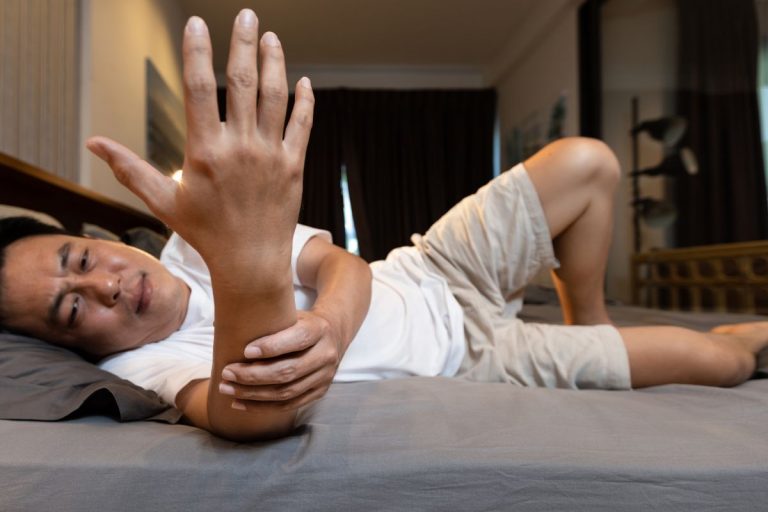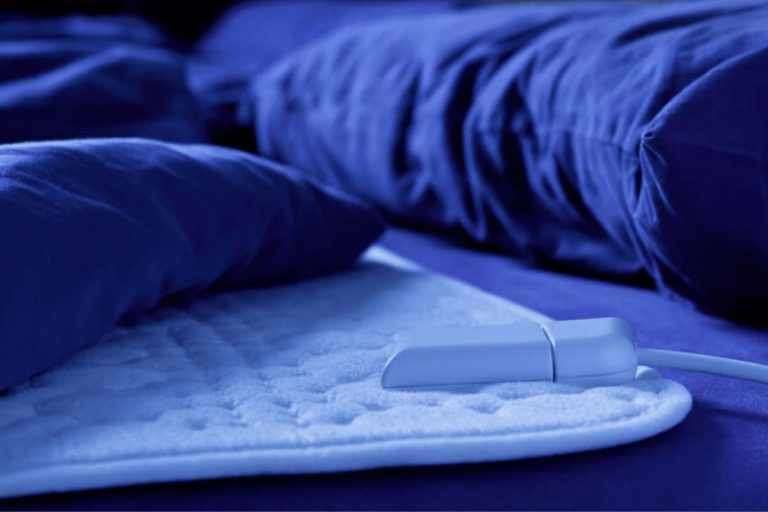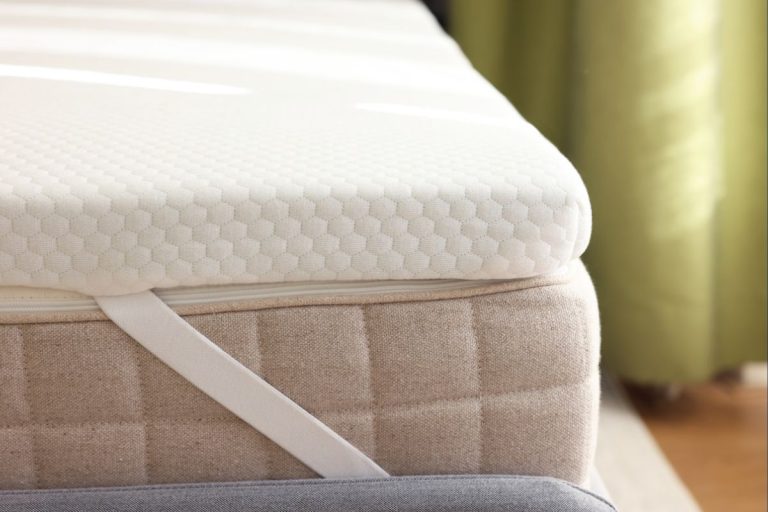You finally decided to replace your old and worn-out mattress. Your new memory foam mattress is here, it’s expanding from its road to your doorsteps and you’re ready to sleep on it as soon as it reaches your full volume. But instead of the foamy and cloud-like sensation, you are woken up by piercing back pain.
Back pain on a memory foam mattress is more than plausible. However, there are different reasons why it could be happening. We wrote this article to tackle the real answer and offer solutions that could potentially solve your problem.
Memory Foam Mattress Can Cause Back Pain
But, so can anything else. The world is now about hustling and busy lifestyles. People either work at physically-tasking jobs like at construction sites and transport. Otherwise, they’re hustling with laptops on their back, heavy books, and other objects. Additionally, spending a lot of time on the computer and in front of the phone can all lead to back pain.
That said, when the body is not naturally aligned most of the time during the day, it’s often too unrealistic to ask it to be aligned in bed too. Not all types of mattresses suit everyone. With that in mind, memory foam mattresses may not work for everyone. However, thickness and firmness can play a great role regardless of memory foam.
With that in mind, memory foam mattresses can also cause back pain. It’s often difficult to determine the firmness of a memory foam mattress. That’s because memory foam has pressure and temperature-activated contouring technology, which may not work for everyone.
Below, we’ll list situations under which memory foam mattress can cause back pain. It’s important to shortlist the reasons and find solutions that can help you with pain without replacing the mattress. Memory foam mattresses can be comfortable and rejuvenating for a great selection of ailments. You just need to use them properly.
Aside from the reasons why your memory foam mattress may not feel right for your back pain, we’ll also list potential solutions that can help you fix it.
Memory Foam Mattress Cause Back Pain: 7 Reasons And Solutions
1. It is Too Soft
The whole point of memory foam mattresses is to feel soft. Light sleepers are supposed to sink into them and feel like they’re sleeping on a sugar cane. The plush sensation should make them feel rested and rejuvenated after a long night.
However, for some sleepers, it may not feel good to sleep on a memory foam mattress that is plush. This mostly refers to heavier sleepers who are heavier than 200 lbs. While the sole purpose of a memory foam mattress is to contour and cuddle you to sleep, plush mattresses can cuddle you in too deep, preventing the proper spinal alignment.
When the back isn’t aligned, it leads to discomfort and eventually to back pain as soon as you lay on it.
How to fix it:
- If there’s a chance, test the mattress in the shop before you buy it.
- Put pillows under your mattress to make your sleeping area firmer.
- Try with a firmer mattress pad (may not work if the mattress is too old.)
- Try sleeping on the side.
2. It is too Firm
Firm mattresses can be problematic, but the fix isn’t so expensive as with softer mattress models. Firmer mattresses are designed for heavier sleepers and those who are fans of stable and firm sleeping surface designed for people who like the minimal sinking sensation.
However, back sleepers with back problems, especially in the lumbar area may end up waking up numb due to a mattress that is too firm. The first few times may be bearable, but after a while, they may end up waking up with radiating pain and aching that persists even throughout the day.
How to fix it:
- Similarly like with a softer mattress, prevention is better than cure. That’s why testing your mattress in person should determine how firm or soft it is.
- Shopping for a mattress pad is good if the mattress generally feels medium-firm to mildly firm.
- The best option is to get a mattress topper with contouring properties, that will make the mattress softer. Just make sure it’s not too soft.
Editor’s note: Is your mattress new? New mattresses may feel extra-firm the first few days, but after a while they relax and get snuggly and hug you to sleep. Give it time. If your mattress comes with a sleep trial, you may even be able to keep it longer to make sure that it works for you.
Read More: Is a Firm Mattress Better for Back Pain?
3. You Get Hot During Sleep
Although this is not a common situation, it’s more than possible to get hot during the night, especially if your memory foam mattress doesn’t come with cooling technology. Memory foam is pressure and heat activated, so it traps heat and is less breathable, especially because it’s made out of synthetic materials.
A lot of people sweat on their back as a result. More often than not, sweating in the lumbar area can lead to irritation of the Sciatic nerve which can result in annoying itching and eventual back pain that radiates to the hips and legs. Luckily there are a few ways to fix this.
How to fix it:
- Don’t use synthetic and polyester materials for bedding. Instead, use silky, linen, and pure cotton covers to make the bed more breathable.
- Invest in a breathable mattress pad or mattress topper. If you’re buying a memory foam topper, ensure it’s infused with gel beads. Mattress protectors aren’t the best of ideas, they don’t always have cooling properties, and are quite loud in the process.
- Invest in a cooling bed system, either a fan or water or air-powered cooler like ChiliPad.
4. The Mattress Is Not Thick Enough
For heavier sleepers, the thickness of a mattress plays an important role in sleep quality. A mattress that is not more than 10-inches thick can give a backache to a lot of heavier sleepers, especially if the mattress is not thick enough. Fortunately, there are ways to add up to thickness.
How to fix it:
- Add additional pillows, blankets, or other materials to add more support to your mattress.
- Use mattress pad or mattress topper for added support.
Also Read: Mattress Thickness Guide: Which One Should I Choose?
5. Incompatible Bed Base
Sometimes, it’s extremely important to consider the bed frames that the mattress is compatible with. While low-end mattresses are said and declared compatible with the vast majority of bases, it may not always be the case. It’s important to always double-check, as your mattress could be squished against the base that doesn’t let it expand enough.
How to fix it:
- Talk with the customer support about what bed frames are compatible with the mattress
- Check the dimensions of the mattress and compare them with the dimensions of the bed frame.
- See if there are some ways to adjust your frame and base before opting to choose a new one.
Also Read: Can/Should You Use a Queen Mattress On a Full/Double Bed Frame?
6. You Sleep on the Wrong Position
Experts say that while we sleep, our body alone is searching for its optimal sleeping position to adjust. That doesn’t surprise us as we often find ourselves waking up in the opposite direction than we fell asleep in. Most people sleep on their back, but it may not be the best position based on a condition you may have.
According to the National Science and Sleep study, sleeping on the stomach is the least preferred sleep position, with only 7% of people preferably sleeping on the stomach.
How to fix it:
- Experiment with different sleep positions that work the best with your back pain. Avoid sleeping on the stomach if it gives you back pain.
7. The Mattress Is Too Old
Mattresses made out of memory foam generally have a long lifespan. The lowest warranty we found in a memory foam mattress is 10 years. Some mattress models offer up to 25 years of warranty, while some offer a lifetime warranty. Still, after some years, and if you’re lucky decades, you will feel that your mattress degraded, sagged, and simply doesn’t offer the same support.
When that happens you will feel discomfort more often that will eventually turn into unbearable back pain. Make sure to check how old your mattress is.
How to fix it:
Although flipping and rotating the mattress, adding pillows and blankets underneath, and even purchasing a mattress topper should correct the mattress posture, it’s only temporary. If you already spend significant time with the mattress, maybe it’s time to change it.
Changing Your Mattress
Mattresses now offer better features than they used in the past and have better warranties. With that in mind, they are more expensive and you feel unhappy to replace them. However, detecting that something is wrong with your mattress and it causes back pain when you wake up is the key.
If you’re buying from a notable manufacturer and vendor like Casper, Nectar, Amerisleep, TempurPedic, and others, you may be offered a sleep trial that may last from 30 days to a full year. That gives you more than enough time to test the mattress out and see if it works for you.
Detecting that the mattress firmness or thickness doesn’t work well for you is the key and you’ll be able to replace it or swap it to a mattress that has the support that will suit you better.





